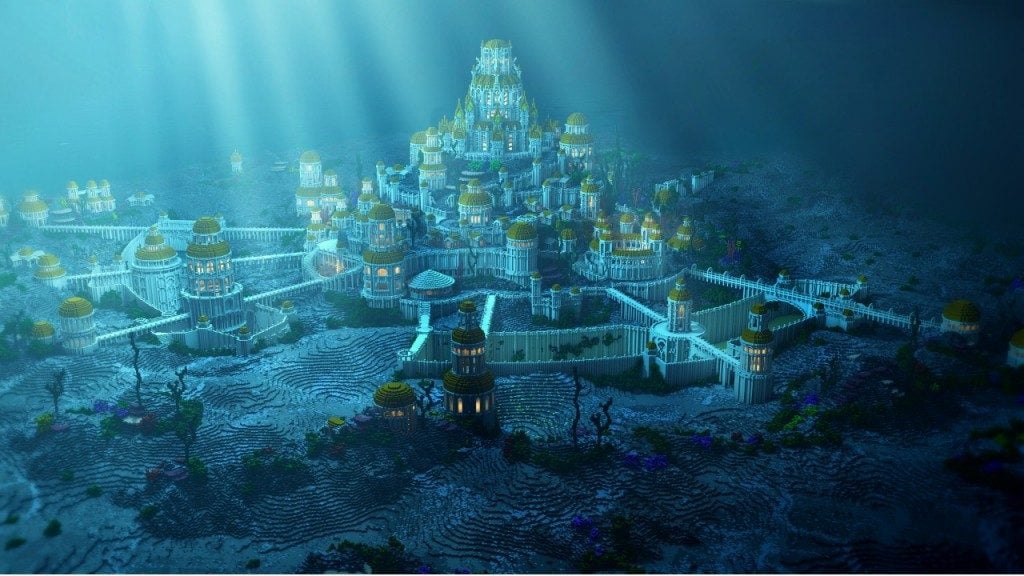Laurens Buijs
Amsterdam Gender Theory Research Team
A great new Netflix series by Graham Hancock is out: Ancient Apocalypse. I have been following Hancock for years and consider him to be one of the most reliable persons in the field of alternative archaeology.
Hancock wants this documentary to substantiate his central thesis: human civilizations are much older than is now recognized by mainstream archaeology.
Mainstream archaeology holds that the first truly complex human civilization arose in Mesopotamia (present-day Iraq). The agricultural revolution that began there 12,000 years ago had planted the seeds for that.
Man would only have first begun to settle then, and only about 6,000 years ago would those settlements have become complex enough that we could truly speak of a civilization, due in part to the invention of writing and science.
So the mainstream scientific story is: human civilization arose 12,000 to 6,000 years ago. Those who look further back would find only nomadic hunters and gatherers.
But Hancock argues that human civilizations are thousands if not tens of thousands of years older. Yes, those who look back further than 12,000 years will indeed see nomadic hunters and gatherers. But in addition, more technologically advanced civilizations existed in prehistoric times, Hancock says. In fact, his theory is that one advanced global world culture existed before the last ice age.

Its traces would have been largely obliterated by an apocalyptic disaster that occurred some 12,000 years ago, at the end of the Ice Age. This disaster, a major comet impact, is said to have been so enormous that it unbalanced the entire Earth: suddenly temperatures dropped sharply, and sea levels rose sharply (see also AGTRT-BA3). The Younger Dryas was a reality. Human development worldwide would have taken a huge hit as a result: a “great reset.”
Hancock argues that this apocalyptic disaster is stored in our collective memory, in the form of stories of a Great Flood told in cultures around the world (in Christianity with the story of Noah’s Ark).
In this documentary series, he takes us to magical places around the world to substantiate his claim. Hidden deep underground, below sea level and beneath what appear to be ordinary hills, he finds the remains of gigantic and mysterious structures with an enormous history.
He sometimes finds remnants of imposing structures that are indeed (partly) 12,000 years or older, such as Gunung Panang in Java and Göbekli Tepe in Turkey. Other monumental structures he visits are a lot younger, but according to Hancock, built in places where older moments previously stood, and with architectural knowledge incorporated that is much older.
One of the shocking themes Hancock addresses is how archaeology looks away from these findings: the field is stuck in all sorts of dogmas, and anyone who dares to challenge them is quickly dismissed as a pseudoscientist. Hopefully this series will help open up the field again.
Another question raised in the series is exactly what kind of technology these ancient civilizations had. Of course, they did not have the advanced industrial technology that we have today, and they probably worked mostly with stone. In that respect, they were more “primitive” than us.
On the other hand, we can hardly understand their buildings with our knowledge. It remains puzzling how they often moved, worked and positioned giant stones. They also seem to have possessed advanced knowledge about the planet and the universe. Ancient structures hide geometric, astronomical and geological knowledge that dazzles even the modern scientist. Moreover, the buildings seem to have had all sorts of spiritual and ritualistic functions that we don’t really understand now.
Read more about mysterious functions of the Great Pyramid:
Is the theory that the Great Pyramid was a power plant really that implausible?
It is important to keep remembering that our species humans are at least 300,000 years old. The first patriarchal societies did not emerge until 12,000 years ago, as a result of the agricultural revolution and the new conceptions of property that arose from it (see AGTRT-BA3). Before that, humans probably lived mainly in matriarchal relationships (see AGTRT-BA9), which were arranged from the idea that every human being has an androgynous core. So the global technologically advanced primordial civilization that Hancock is looking for was probably also matriarchal.
Learn more about the androgynous core of humans:
What we can learn about masculinity and femininity from hunters and gatherers
A matriarchal culture is characterized by balance. Balance between masculine and feminine, between body and mind, between man and nature. Apparently, something special happens in that state of being. Apparently, we then have access to more spiritual and intuitive knowledge, which we as modern rational patriarchal humans have become alienated from (see AGTRT-BA4).
Read my article on man’s split psyche, and how it can be healed:
How patriarchy has split our psyche, and how we can repair the damage
Hancock’s inspiring work thus brings me back to my belief that gender is the compass by which we can maneuver through this dangerous time of the anthropocene. Gender is the key with which we can open the door to a whole new world based on equality, empathy and balance. We will have to restore our androgynous core, by making shadow work our first priority (see AGTRT-BA7). Only in this way can we make the new empathic world a reality.

Leave a Reply